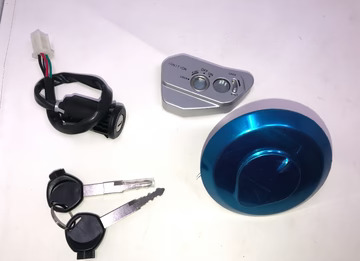Many people put off going to the dentist until they are in severe pain. By that point, what could have been a simple and cheap procedure becomes a drawn-out and expensive one. Here's the thing…
About 60% of oral cancers are diagnosed at an advanced stage, when treatment is much more difficult. It's way too late.
And get this – 46% of children and teens 2-19 have untreated or restored dental caries. The problems start early, and they only get worse if left untreated.
But here's the good news…
Dental problems are almost completely preventable when caught in time. You just have to know what to look for.
What Are The Most Common Dental Problems?
How To Spot Early Warning Signs
When To See A Professional
Simple Prevention Strategies That Actually Work
Dental problems don't just "appear" overnight. They slowly build up over time, often over weeks, months, and even years.
Here are the big ones to look out for:
Tooth decay – The most common dental problem in the world. It can start as a tiny hole in the tooth but eventually destroy the entire tooth if left untreated.
Gum disease – It can start as a simple inflammation but then progress to infection that seriously damages the gums and supporting bone structure.
Tooth sensitivity – Usually an indication that you're enamel is wearing away or you have exposed tooth roots.
Bad breath – An obvious sign that you have bacteria buildup, or other underlying dental problems that need attention.
Oral cancer – The most serious problem on this list. But also the most treatable when caught in the early stages.
Pretty scary when you put it all together, right?
But it's not as bad as it sounds. I'm going to show you how to spot these problems before they become major issues later.
The trick to catching dental problems early is knowing what to look for…
And most people have no idea what early warning signs actually look like. That's why it's so important to have a professional dentist to work with, like an experienced leading Sydney cosmetic dentist team. They're trained to spot potential problems you may not even be aware of during your regular oral hygiene routine.
Here's what to look for:
White spots on your teeth (the earliest sign)
Tooth pain when eating sweet, hot or cold foods
Visible holes or pits in your teeth
Brown, black or white staining on tooth surfaces
Bad taste in your mouth
Gums that bleed when you brush or floss
Red, swollen or tender gums
Gums that have pulled away from your teeth
Persistent bad breath that won't go away
Loose or separating teeth
Okay, this one is really important. I can't stress this enough – early detection saves lives…
Sores in your mouth that won't heal within two weeks
Red or white patches in your mouth
Difficulty swallowing or chewing
Numbness in your mouth or tongue
A lump or thickening in your cheek
Unfortunately, less than 25% of patients visiting dentists report having an oral cancer screening. That's a massive missed opportunity for early detection.
Here's the thing… you shouldn't wait until you have pain to see a dentist. Pain is the last thing you should experience before going in for a visit.
Why?
Because pain is your body's last-ditch SOS signal. The problem has been developing for months, or even years.
So when is the right time to see a professional?
Go to a dentist as soon as you notice any of these symptoms:
Any sore or unusual spot that hasn't gone away after 14 days
Persistent tooth pain or sensitivity
Bleeding gums while you brush or floss
Loose teeth in adults
Changes in your bite or jaw alignment
Difficulty chewing or swallowing
Book a routine checkup if it's been longer than:
6 months since your last cleaning
12 months since your last comprehensive exam
Any amount of time if you've never had an oral cancer screening
Remember, the earlier you catch problems the easier and cheaper they are to treat. It's really that simple.
Prevention is always better than treatment.
And the good news? Most dental problems are completely preventable with the right approach. You don't need fancy products or complicated routines either.
Brush properly – fluoride toothpaste for 2 minutes, twice daily. Pay special attention to the gumline and back teeth.
Floss every day – this gets rid of the bacteria your toothbrush can't reach. No exceptions.
Use antibacterial mouthwash – kills bacteria that cause gum disease and bad breath.
Watch your diet – limit sugary and acidic foods.
Regular cleanings – this gets rid of tartar buildup you can't get at home.
Comprehensive exams – to spot problems before you feel symptoms.
Oral cancer screenings – should be part of every routine visit.
Quit smoking, and limit alcohol.
Stay hydrated – for healthy saliva production
Wear a mouthguard if you grind your teeth
Replace your toothbrush every 3-4 months
Different age groups face unique challenges when it comes to oral health.
Children and teens need extra protection against tooth decay and should receive dental sealants on their back teeth.
Adults need to focus on prevention of gum disease and get regular oral cancer screenings. Special attention needed if using tobacco or alcohol.
Seniors need to be on the lookout for dry mouth, which increases the risk of tooth decay and gum disease.
The key is early detection and prevention. No matter your age.
By knowing what to look for, maintaining good daily habits, and working with dental professionals for regular exams and cleanings, you can avoid most serious dental problems entirely.
The earlier you catch issues the simpler and less expensive they are to treat. That means:
Less pain and discomfort
Lower treatment costs
Better long-term oral health
Reduced risk of serious complications
Don't wait until you're in pain to take action. Start protecting your oral health today.




Want to add a comment?